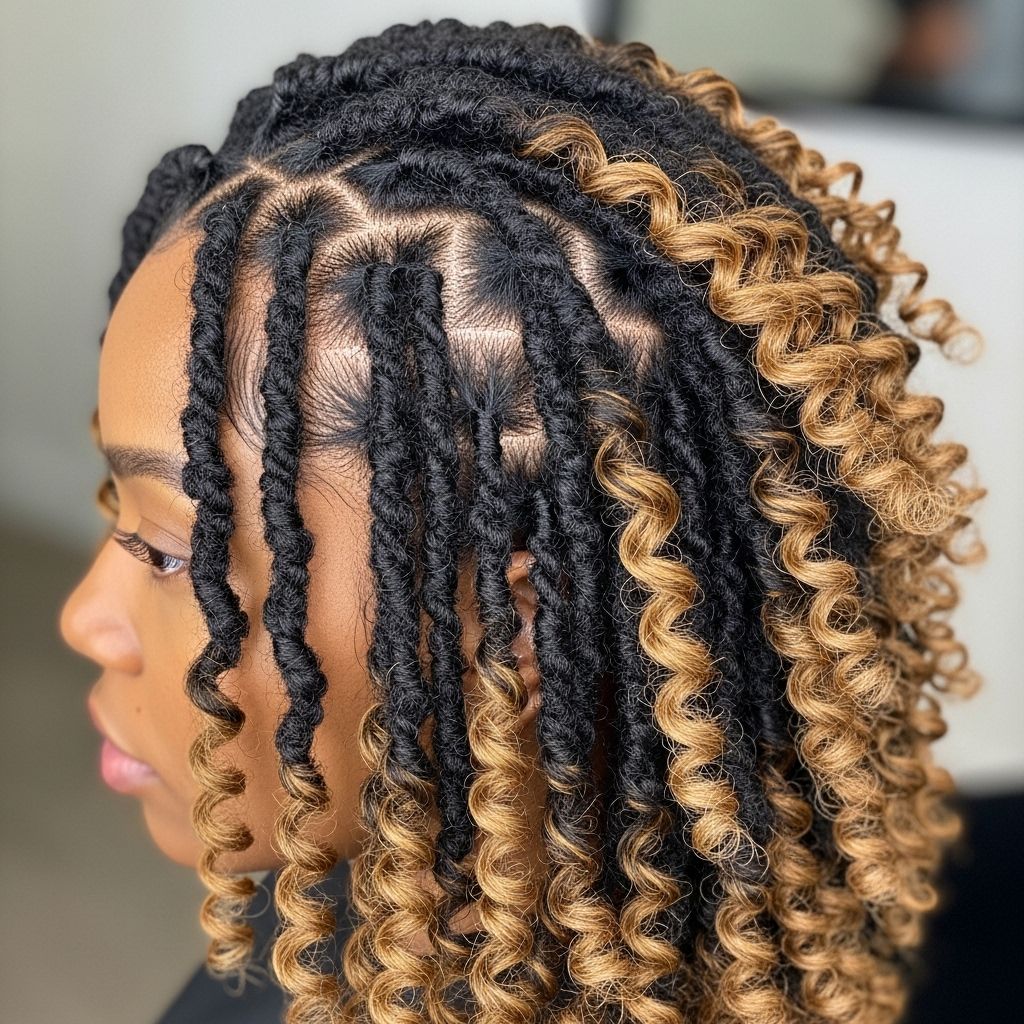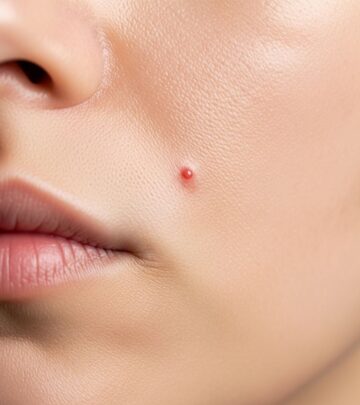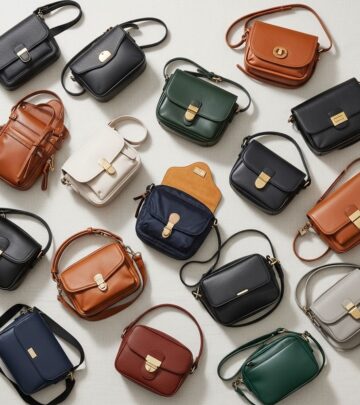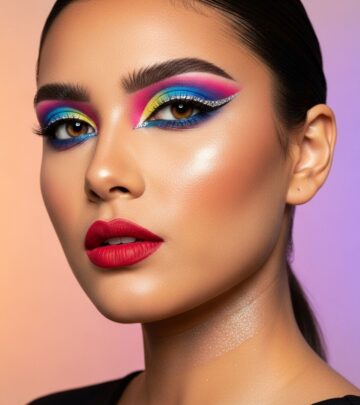Crochet Locs with Curls: The Complete How-To Guide
Master the art of stunning crochet locs with beautiful curls

Crochet locs with curls have become one of the most sought-after protective hairstyles, combining the elegance of traditional locs with the soft, romantic appeal of cascading curls. This versatile style, often called boho locs or goddess locs, offers a perfect blend of sophistication and effortless beauty that works for any occasion. Whether you’re heading to a special event or simply want to switch up your everyday look, crochet locs with curls provide a stunning option that’s both practical and fashionable.
The beauty of this hairstyle lies in its accessibility and affordability. Unlike permanent locs that require months or years to cultivate, crochet locs can be installed in just a few hours and removed whenever you’re ready for a change. The addition of curly ends creates a softer, more textured appearance that frames the face beautifully while maintaining the protective benefits that make locs so popular among natural hair enthusiasts.
Understanding Crochet Locs with Curls
Crochet locs with curls represent a modern twist on traditional protective styling. This technique involves cornrowing your natural hair in a specific pattern and then using a crochet needle to loop pre-made loc extensions through the braids. The curly ends distinguish this style from standard crochet locs, adding movement, dimension, and a bohemian flair that has captured the attention of style enthusiasts worldwide.
What makes this style particularly appealing is its versatility in achieving different looks. You can opt for tight, defined curls for a more polished appearance, or loose, flowing waves for a casual, beachy vibe. The length, thickness, and curl pattern can all be customized to suit your personal style preferences and face shape. Additionally, the protective nature of this style means your natural hair remains tucked away safely, minimizing manipulation and promoting healthy hair growth while you enjoy your fabulous new look.
The installation process is surprisingly straightforward once you understand the basic technique. The key to successful crochet locs with curls lies in creating a solid foundation with your cornrows and selecting high-quality crochet hair that matches your desired aesthetic. The entire process typically takes between one and a half to three hours, depending on your experience level and the complexity of your chosen style.
Essential Materials and Preparation
Before beginning your crochet loc installation, gathering all necessary materials is crucial for a smooth and efficient process. Quality matters significantly when selecting your supplies, as premium materials will not only make installation easier but also ensure your style lasts longer and looks more natural.
For the hair itself, boho goddess locs or similar crochet loc extensions with curly ends are ideal. Most installations require between two to four packs of hair, depending on your desired fullness and the size of your head. Popular brands include Kima Boho Goddess Locs, Outre Twisted Up, and various human hair options that offer superior quality and a more natural appearance. When selecting your hair, consider factors like length, color, and curl pattern to ensure the final result aligns with your vision.
Your toolkit should include a crochet needle or latch hook, which is the primary tool for installing the locs. These come in various sizes, but a medium-sized hook works well for most installations. You’ll also need hair clips or bands to section your hair, a rat-tail comb for creating precise parts, edge control or gel for smoothing your hairline, and scissors for trimming any excess length after installation.
Preparation of your natural hair is equally important. Start with clean, moisturized hair that’s been thoroughly detangled. Some people prefer to blow-dry their hair first to stretch it and make braiding easier, while others work with damp hair. Apply a light leave-in conditioner or moisturizer to ensure your hair remains hydrated throughout the wear period, as your natural hair will be braided down for several weeks.
Creating the Perfect Braiding Pattern
The foundation of any successful crochet loc installation is a well-executed braiding pattern. The pattern you choose will affect how natural the style looks, how easily you can part and style the locs, and how comfortable the installation feels on your scalp. The most popular pattern for crochet locs with curls involves a combination of cornrows and a strategic top section left for individual loc placement.
Begin by creating a semi-circular section at the crown of your head. Start with a middle part that extends from your hairline back to the crown area. Then create curved parts on each side, forming a horseshoe or semi-circle shape. This section will later have individual locs installed for a more natural appearance and greater styling versatility, allowing you to create various partings and updos.
For the remaining hair on the sides and back, create horizontal cornrows working from front to back. Most installations use between three to five cornrows on each side, depending on the size of your head and your desired density. When braiding, maintain consistent tension—tight enough to provide a secure base but not so tight that it causes discomfort or tension on your edges. Each cornrow should extend straight back, stopping at the nape of your neck.
The size and placement of your cornrows directly impact the final look. Thinner cornrows allow for more precise placement of the crochet locs and typically result in a flatter, more natural-looking installation. However, they take more time to create. Thicker cornrows are faster to install but may create more visible bulk. Finding the right balance for your hair type and skill level is essential for achieving optimal results.
Step-by-Step Installation Process
Once your braiding pattern is complete, the actual installation of the crochet locs can begin. Before starting, it’s beneficial to sanitize your crochet hair by rinsing it with warm water and allowing it to air dry. This removes any factory residue and helps the curls settle into their natural pattern, making the final style look more realistic and lived-in.
To install each loc, open your crochet needle and slide it underneath one of your cornrows. The placement doesn’t need to be perfectly uniform—slightly varied spacing actually creates a more natural appearance. Catch the looped end of your crochet loc onto the hook, close the latch, and pull the hook back through the braid, bringing the loop of the loc with it. Once the loop is through, open the latch again and place the opposite end of the loc into the hook.
Close the latch and pull this end through the loop you just created, essentially creating a slip knot that secures the loc to your cornrow. Pull down on both sides of the loc at the base to tighten the knot securely against your braid. The loc should feel snug but not uncomfortably tight. Repeat this process along each cornrow, working from front to back and maintaining relatively consistent spacing between each loc.
When working on the back of your head, be mindful not to overcrowd the area. Installing locs too densely, particularly at the nape, creates unnecessary weight and bulk that can cause discomfort and make the style appear less natural. Leaving slightly more space between locs in the back portion ensures the style remains lightweight and comfortable for extended wear.
Installing Individual Locs at the Crown
The semi-circular section at your crown requires a different installation technique that creates the illusion of natural loc growth from your scalp. This section is crucial for achieving versatile parting options and a realistic hairline appearance. Rather than attaching locs to cornrows, you’ll be working with small sections of twisted or plaited hair.
Take down small sections of hair from the crown area one at a time. The size of each section should be proportional to the thickness of your crochet locs—typically about the width of a pencil or slightly larger. Twist or braid each section tightly, working from root to end. This creates a small, secure base for attaching the individual loc.
Insert your crochet needle through the twisted section near the root, catching the loop of the crochet loc. Pull the loop through, then thread the opposite end through the loop just as you did with the cornrow installation. The key difference here is precision—because these locs are more visible and determine your parting flexibility, they need to be installed carefully and evenly across the crown section.
Work methodically across the entire crown area, maintaining consistent sizing and spacing. The individual locs should blend seamlessly with those installed on the cornrows, creating a cohesive look throughout. This technique allows you to part your hair in multiple directions and create various styles, from center parts to side parts to pulled-back looks, significantly increasing the versatility of your installation.
Styling and Finishing Touches
After all the locs are installed, several finishing touches will elevate your style from good to spectacular. Start by addressing your edges, which frame your face and significantly impact the overall polished appearance of the style. Apply a quality edge control product to smooth and lay down your baby hairs, using a small brush or your fingers to create your desired edge pattern.
Examine the overall length and shape of your locs. If you prefer a specific length or want to create layers for added dimension, carefully trim the ends using sharp hair scissors. When cutting crochet locs with curls, work in small sections and cut conservatively—you can always remove more length, but you can’t add it back. For a bob-style look, cut the locs to just below chin length or at your shoulders, angling slightly if desired for a more modern silhouette.
To enhance and define the curls, apply a small amount of mousse or curl-defining cream, scrunching gently from the ends upward. This activates the curl pattern and adds shine without creating excessive weight or crunchiness. For human hair crochet locs, you can even use light heat styling to reshape curls if needed, though synthetic options should never be exposed to direct heat.
Consider the overall shape and volume distribution. Gently separate some of the locs with your fingers to add volume and create a fuller appearance. This technique works particularly well around the face and crown area, where added volume creates a flattering frame for your features.
Maintenance and Care Guidelines
Proper maintenance ensures your crochet locs with curls remain beautiful throughout their wear period, which typically ranges from four to eight weeks. Unlike permanent locs, crochet installations require relatively minimal daily maintenance, but certain care practices will keep your style looking fresh and protect your natural hair underneath.
Nighttime protection is essential for preserving your style. Before bed, gather your locs into a loose, high ponytail or pineapple, being careful not to create tension at the roots. Cover your hair with a satin bonnet or sleep on a satin pillowcase to minimize friction and prevent the curls from becoming frizzy or tangled. Never sleep with your locs down and uncovered, as this causes unnecessary wear and matting.
Cleansing your scalp during wear is important for comfort and scalp health. Mix a clarifying shampoo with water in a spray bottle and apply directly to your scalp, focusing on the cornrow bases. Gently massage with your fingertips, then rinse thoroughly, ensuring all product is removed. Allow your hair to air dry completely or use a hooded dryer on a low setting. Avoid excessive manipulation of the locs themselves during washing, as this can cause loosening or frizzing.
Keep your scalp moisturized by applying a light oil or scalp serum every few days. Use the nozzle of the applicator bottle to part through the locs and apply directly to your scalp and cornrows, massaging gently to distribute the product and stimulate blood flow. This prevents dryness and itching while promoting healthy hair growth beneath the style.
The curly ends require occasional refreshing to maintain their definition. Lightly mist the curls with water mixed with a small amount of leave-in conditioner, then scrunch gently. For synthetic hair, avoid products containing heavy oils or butters, as these can cause buildup and weighing down of the curls. Human hair options can tolerate richer products and even light styling with flexi-rods or rollers if you want to refresh the curl pattern.
Troubleshooting Common Issues
Even with careful installation, you may encounter some common challenges with crochet locs. Understanding how to address these issues ensures your style remains comfortable and attractive throughout its wear period. Loosening at the roots is one of the most frequent problems, particularly in high-manipulation areas like the crown and hairline.
If you notice locs beginning to loosen, you can often secure them without completely removing and reinstalling. Use a crochet needle to carefully pull the loosened loc tighter, or add a small amount of thread to wrap around the base for additional security. For more significant loosening, it may be necessary to remove the affected loc and reinstall it properly to prevent further issues.
Frizzing and tangling of the curly ends can occur, especially after several weeks of wear. To minimize this, reduce manipulation and always detangle gently using your fingers or a wide-tooth comb, working from the ends upward. If synthetic hair becomes excessively tangled, dipping the ends briefly in hot water (not boiling) can sometimes help reset the curl pattern, though this should be done cautiously and sparingly.
Scalp irritation or itching is another common concern. This often results from product buildup, dryness, or sensitivity to the synthetic hair. Regular scalp cleansing and moisturizing typically resolve mild itching. For persistent irritation, ensure you’re not allergic to the hair fiber and consider switching to human hair options for future installations. Never scratch your scalp aggressively, as this can damage both your natural hair and the installation.
Removal Process and Aftercare
When you’re ready to remove your crochet locs, doing so carefully protects your natural hair from damage. The removal process is significantly faster than installation, typically taking 30 minutes to an hour depending on your technique and the number of locs installed. Never attempt to pull or yank the locs out, as this can cause breakage and damage to your natural hair.
Start by cutting each loc just above where it’s attached to your cornrow or twisted section. Use sharp scissors and cut carefully to avoid accidentally cutting your natural hair. Once all locs are cut, you can gently pull out the remaining short pieces. Some people prefer to cut the locs in the middle of the length first, then cut closer to the base, which can make removal feel more manageable psychologically.
After removing all the crochet locs, carefully unravel each cornrow or twist. Your natural hair will likely be tangled and may shed more than usual—this is normal, as you’re experiencing several weeks’ worth of natural shedding all at once. Use a detangling spray or conditioner and work through each section methodically with your fingers before using a comb.
Follow removal with a thorough cleansing and deep conditioning treatment. Your hair and scalp have been covered for weeks, so they need intensive moisture and care. Apply a protein treatment if your hair feels weak or overstretched, followed by a moisturizing deep conditioner. Allow your hair to rest for at least a week before installing another protective style, giving your scalp and strands time to recover and rebuild strength.
Styling Variations and Creative Options
One of the most appealing aspects of crochet locs with curls is the numerous styling possibilities they offer. The combination of structured locs and flowing curls creates a dynamic canvas for creative expression. Half-up, half-down styles are particularly flattering with this look, allowing you to show off both the loc texture and the curly ends simultaneously.
For a romantic, ethereal look, gather the top section of locs into a loose, messy bun while allowing the remaining locs and curls to cascade down your back. This style works beautifully for special occasions and can be accessorized with flowers, decorative pins, or hair jewelry for added elegance. The slightly undone quality of this style perfectly complements the bohemian nature of the locs themselves.
High ponytails and top knots showcase the curly ends while creating a sleek, sophisticated silhouette. When creating updos with crochet locs, use soft hair ties rather than tight elastics to prevent stress on the installation. You can also experiment with side ponytails, braided crowns using the locs themselves, or asymmetrical styles that draw the locs to one side for a dramatic effect.
Accessorizing your crochet locs with curls adds personality and visual interest. Headbands, scarves, and hair cuffs complement the bohemian aesthetic beautifully. For a more dramatic look, consider adding colorful locs or incorporating different curl patterns throughout the style. Ombré or highlighted effects can be achieved by mixing different colors of crochet hair during installation, creating dimension and depth.
Frequently Asked Questions
How long do crochet locs with curls typically last?
Crochet locs with curls can last anywhere from four to eight weeks with proper care and maintenance. The longevity depends on factors like hair texture, installation quality, maintenance routine, and how much you manipulate the style. Most people find that six weeks is the sweet spot for optimal appearance before the style begins to look worn.
Can I wash my hair with crochet locs installed?
Yes, you can and should wash your scalp during wear. Use a diluted shampoo in a spray bottle, applying directly to the scalp and cornrow bases. Gently massage, rinse thoroughly, and allow to dry completely. Focus on cleansing your scalp rather than the locs themselves to prevent frizzing and loosening of the installation.
How many packs of hair do I need for crochet locs with curls?
Most installations require two to four packs of crochet loc hair, depending on your desired fullness, head size, and the brand of hair used. Two packs create a natural, lightweight look, while three to four packs provide fuller, more voluminous results. It’s better to have extra hair available than to run short during installation.
Are crochet locs with curls suitable for all hair types?
Yes, crochet locs work well for all hair types and textures. The style is particularly popular among those with natural or relaxed hair seeking a protective style. The key is ensuring your hair is strong enough to be cornrowed and that the installation isn’t too tight, which can cause tension regardless of hair type.
Can I swim with crochet locs with curls?
While you can swim with crochet locs, it’s not highly recommended as chlorine and salt water can damage the hair and cause frizzing, particularly with synthetic options. If you do swim, wear a swim cap and rinse your hair thoroughly with fresh water immediately afterward. Human hair crochet locs tolerate water exposure better than synthetic varieties.
Will crochet locs damage my natural hair?
When installed correctly without excessive tension and removed properly, crochet locs should not damage your natural hair. In fact, they’re considered a protective style that promotes hair growth by minimizing daily manipulation. The key is avoiding tight braiding, maintaining your scalp health during wear, and being gentle during the removal process.
References
Read full bio of medha deb












